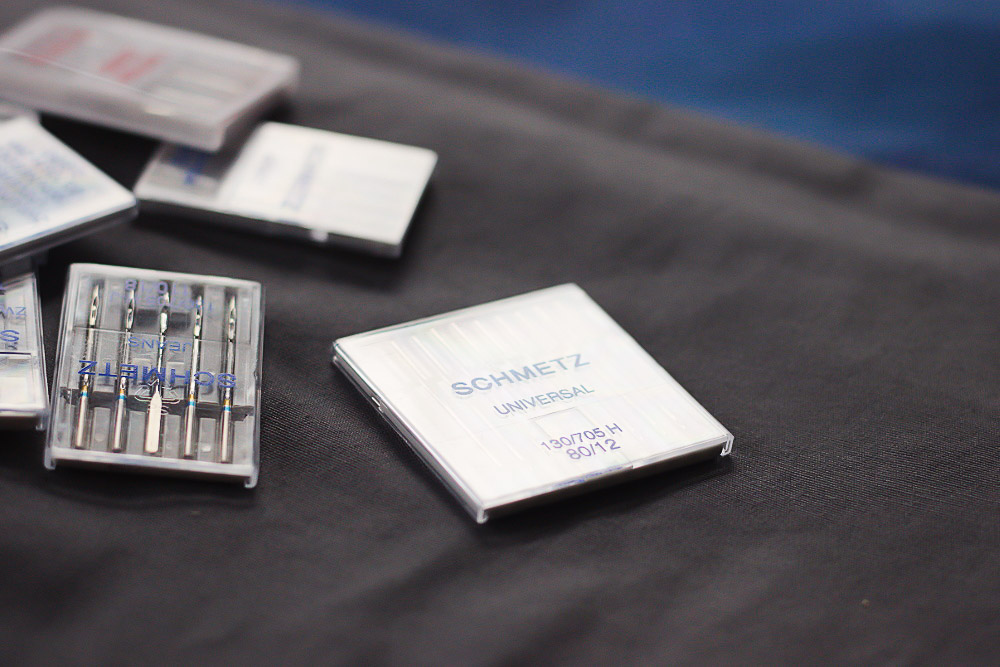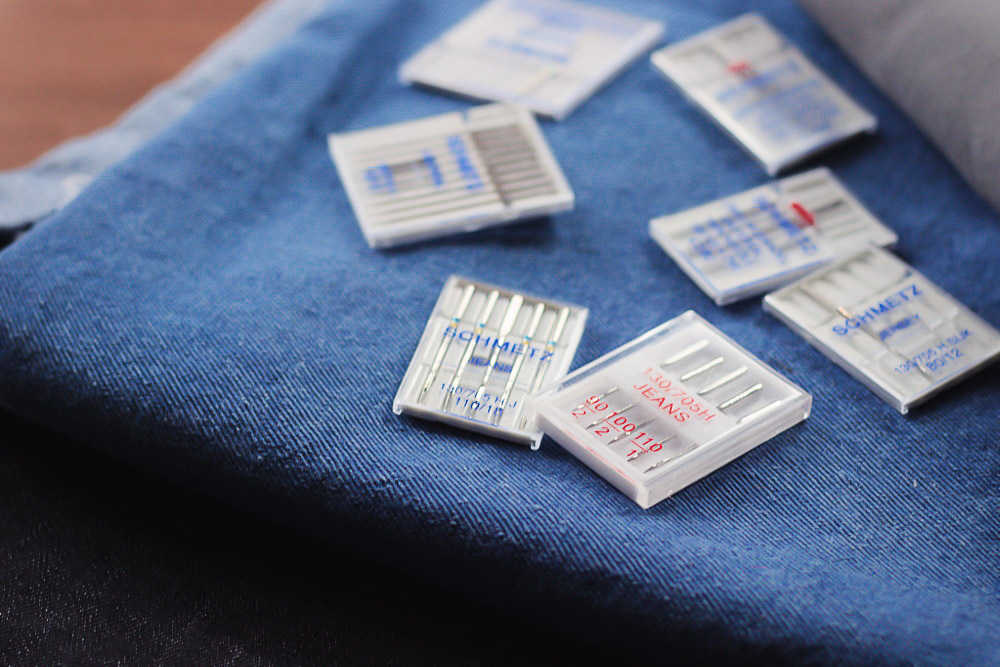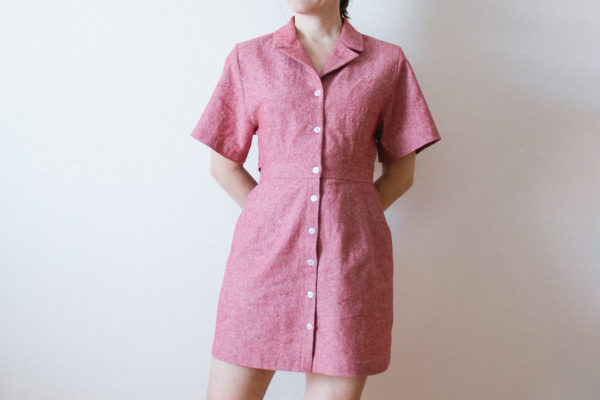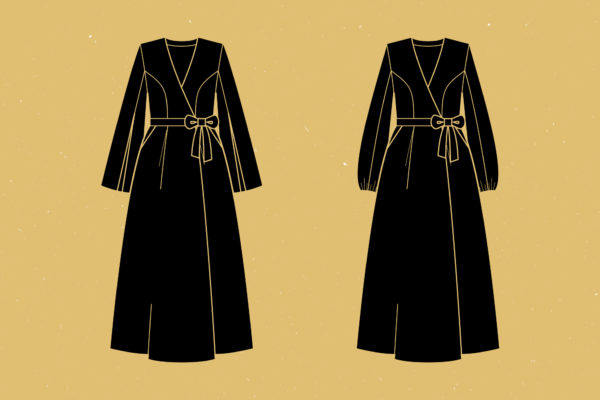One strong point of Safran is that it can be made in many different fabrics for a wide range of styles: denim, twill, cotton sateen or even pleather, as long as it has 20 to 30% stretch, it works! However not every fabric requires the same tools, especially when it comes to sewing machine needles. How to pick the one adapted to your project? Follow the guide…
The importance of the right needle
Picking a sewing machine needle suited to your fabric is crucial for the success of your project. Use a thick needle on a lightweight fabric and you will damage the latter: visible puncture holes at the seams, broken fibers, or even the fabric being “swallowed” by the machine are all symptoms of such a mismatch. The inverse is also true, and using a thin needle on a dense fabric like denim can actually be dangerous: the needle can bend and damage the machine, and you risk hurting yourself if it breaks!
Besides its size, the type of the needle is also important: a sharp needle can break the fibers of a knit or stretch fabric, while a rounded or dull one will lead to skipped stitches. Always try your needle on a scrap of fabric before you start, using the advice below as a starting point; if the stitching is not satisfying, try changing the size or type of your needle before you fiddle with the thread’s tension. Also remember that needles get used up very quickly, especially when sewing thick fabrics. If your needle is dull, your machine will skip stitches: before trying another type of needle, check that a new one does not already fix the problem!

Needle types
There are two aspects to consider when choosing a needle: its type and its size. Needle sizes are indicated by two numbers: 70/10, 80/12, 90/14… The first one is the European notation, which indicates the diameter of the needle shaft. The second one corresponds to its American size, in an arbitrary scale. In both cases, the higher the number, the thicker the needle.
Generally speaking, you should first select the needle type based on your fabric’s properties (woven or knit? stretch or not?) then the size based on its weight (select a higher number for heavier, thicker, or denser fabrics). The main feature that varies from one type to the next is the shape of the point and tip, which will be more or less rounded.
Universal needles
The most commonly used needles are universal needles. They are named by opposition to sharp, or “microtex” needles, because their slightly rounded tip allows them to be used to sew both knits and wovens. They will work for most of the recommended fabrics for Safran: stretch cotton sateen, light twill, stretch suede…
Stretch and jersey needles
Ballpoint needles have an even more rounded tip designed to avoid breaking fibers in knits and fabrics with spandex. Jersey needles are even more rounded than stretch needles, and are more indicated for knits than for stretch wovens. As for Safran, a stretch needle will be perfect to sew it in stretch velvet, or if you notice that the spandex in your fabric is damaged by the universal needle.

Jeans needles
Jeans needles have a stronger shaft, allowing them to sew through multiple layers of denim without bending or breaking, and a very thin point that will go through densely woven fabric. It’s the needle to use for everything denim, whether it contains spandex or not. A small piece of advice: if you are using a serger to finish your seam allowances, think about changing its needles as well, as they can break too!
Leather needles
Leather needles are extremely sharp, so they can pierce several layers of thick skin. If you are thinking about making Safran in stretch pleather, beware! Pleather is not leather, and you shouldn’t use a leather needle to sew it. The sharp point could break the threads that form the fabric’s backing. Use a jeans needle instead, and match its size to your fabric’s thickness.


